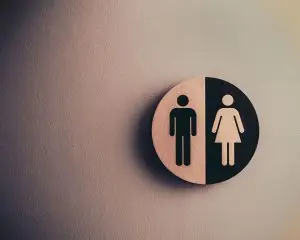A group of researchers identified around 77,990 OTUs (distinct taxonomic units) of microbes (including bacteria and viruses) from a restroom-based study. This proves that public restrooms are undoubtedly a house of germs with greater disease transmission potentiality.
In general, most people think of a public bathroom or a toilet as an unsanitary and disease-promoting place. Unless they don’t have an alternate hygienic choice, they do not prefer using them. In the event of the COVID-19 pandemic, the situation has worsened due to the probability of the surface spread of the coronavirus.
Surface Viability of COVID-19-related Viruses
Striking research published in the New England Journal of Medicine (March 2020) studied the viability of COVID-19 related SARS-CoV-2 and SARS-CoV-1 viruses on surfaces like steel, plastic, copper, cardboard, and aerosols. The researchers found that the SARS-CoV-2 virus survived from hours to days on these surfaces. The viruses were found surviving:
- up to 48 hrs in stainless steel surfaces
- up to 72 hrs on plastic surfaces
- up to 4 hrs on copper surfaces
- up to 24 hrs on cardboard surfaces
- up to 3 hrs in aerosols
Unfortunately, it is cited in an October The Washington Post article that scientists have identified a few traces of the COVID-19 viral RNA in the urine and feces of infected patients. What will happen if these residues are left behind in the restrooms?
High-Touch Surfaces at Public Restrooms
Public restrooms own the most high-touch surfaces, including the doorknobs, flush handles, toilet seats, and other plastic or steel-made surfaces. A health article highlights one of the research (The Journal of Physics of Fluids, June 2020) findings that flushing lets out nearly 60% of the produced aerosols up three feet above the seat.
When these aerosols can reach up to three feet in the air, imagine the number of bacteria and viruses, including COVID-19 floating in the air and upon the restroom’s surfaces. This creates an immediate need for disinfection in public restrooms. Unless disinfected, these restrooms will continue to serve as the domicile of dangerous germs.
UVC Disinfection: The Powerful Rescuer
Numerous studies have proven the capability of UVC light in killing microorganisms. The UVC light (100 – 280 nm) has the potential to damage the genetic material (DNA or RNA) of exposed microbes. This either kills or inactivates the pathogens, thereby preventing the transmission or proliferation of the microorganisms. This extraordinary germicidal property has been well-studied and experimented with by several researchers until today.
A 2016 study published in the Journal of Infection Control and Hospital Epidemiology stands as evidence for demonstrating the ability of UVC light in disinfecting particular coronavirus strains, namely the MHV and MERS-CoV viruses. Hence, UVC light can now be used to disinfect the surfaces and air in and around the public restrooms.
UVC Light Disinfection Sanitizer The PXL sanitizer, one of the most recommended UVC disinfection systems, is empowered with a powerful and efficient UVC light system to eradicate 99.999% germs in just 25 seconds. This disinfection system is completely equipped and safe to use. Use this to disinfect a shared/public restroom or bathroom to stop the spread of COVID-19 and other p
Tzachi Sabati

